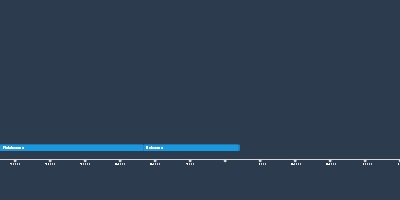Pliocene (1 ene 5333000 año aC – 31 dic 2580001 año aC)
Descripción:
The Pliocene is a geological epoch that occurred from about 5.333 to 2.58 million years ago. It is the most recent epoch of the Neogene period and is followed by the Pleistocene epoch.Key features of the Pliocene include:
Climate Transition: The Pliocene is characterized by a transition from the warm and stable conditions of the preceding Miocene epoch to a climate that resembles the modern climate. During the early Pliocene, global temperatures were relatively high, but they gradually cooled over time.
Land and Sea Configurations: The Pliocene witnessed significant geological changes in land and sea configurations. The uplift of the Andes Mountains and the Himalayas continued during this epoch, affecting regional weather patterns and creating diverse habitats. Additionally, the separation of the Isthmus of Panama between North and South America led to the establishment of a land bridge, allowing for the exchange of flora and fauna between the two continents.
Diverse Marine Life: The Pliocene was a time of abundant marine life. Coral reefs expanded, and a variety of marine organisms thrived in the warm oceans. Some marine species that are familiar today, such as sharks, dolphins, and whales, existed during the Pliocene.
Terrestrial Fauna: The Pliocene featured a diverse array of terrestrial fauna. Mammals continued to evolve, with several groups, including elephants, horses, and carnivores, diversifying and spreading to different parts of the world. However, many iconic extinct animals, such as the saber-toothed cats and mammoths, did not exist during the Pliocene but appeared earlier during the preceding epochs.
Human Ancestors: The Pliocene is a critical period in human evolution. Hominin species such as Australopithecus and early members of the genus Homo were present during this epoch. Fossil remains and archaeological evidence suggest that human ancestors were adapting to changing environments, with some species displaying early stone tool use.
The Pliocene provides valuable insights into the Earth's climate, geological processes, and the evolutionary history of various organisms. It represents a time of transition and sets the stage for the subsequent Pleistocene epoch, which encompasses the Ice Age and the emergence of modern humans.
Añadido al timeline:
fecha:
1 ene 5333000 año aC
31 dic 2580001 año aC
~ 2754827 years
